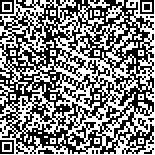| This article has been:Browse 1763Times Download 2719Times |

scan it! |
|
|
| DOI:10.13522/j.cnki.ggps.2020648 |
|
| The Combined Impact of Irrigation and Fertigation on Nitrogen Uptake of Winter Wheat at Jointing Stage |
|
ZHANG Xiaopei, ZHOU Xinguo, WANG Hezhou,YANG Shenjiao, CHEN Jinping, LIU Anneng
|
|
(1. Farmland Irrigation Research Institute, Chinese Academy of Agricultural Sciences, Xinxiang 453002, China;
2. National Agro-ecological System Observation and Research Station of Shangqiu, Shangqiu 476000, China)
|
| Abstract: |
| 【Background and objective】Most agriculture-induced eco-environmental problems in north China are due to poor management in irrigation and fertigation of winter wheat, especially the use of nitrogen (N) fertilizer. Uptake of N by the wheat and its associated use efficiency depend on many biotic and abiotic factors, and the aim of this paper is to experimentally investigate how to improve them by optimally combining irrigation and fertigation at the jointing stage.【Method】The experiment was carried out in a field. It compared three irrigations: rain-fed (W1), irrigating 60 mm (W2), and 90 mm (W3) of water. For each irrigation treatment, there were three nitrogen top-dressing treatments: 0 kg/hm2 (N1), 75 kg/hm2 (N2) and 150 kg/hm2 (N3). The basal nitrogen application in all treatments was 150 kg/hm2. In each treatment, we measured the physiological traits, yield and N uptake of the crop.【Result】The leaf area index (LAI), plant height, aboveground biomass, grain yield and N uptake all increased significantly as the irrigation and nitrogen applications increased. However, when N top-dressing exceeded 75 kg/hm2, a further increase in N application did not have a significant effect on physiological traits of the crop, especially in W3 irrigation treatment. Grain yield was negatively correlated to the 1 000-grain weight at significant level; LAI, plant height, aboveground dry matter, grain numbers per spike, panicle numbers per spike were all positively correlated to the grain yield at significant level. With the increase in irrigation amount at the jointing stage, N production efficiency, grain N absorption and N utilization efficiency all increased, while the WUE decreased. With the increase in N top-dressing amount, N production efficiency, as well as grain N absorption and N utilization efficiency decreased, while the associated WUE increased. W3+N2 significantly increased grain yield and N uptake by 1.33%~65.92% and 4.63%~59.25%, respectively, compared with other treatments.【Conclusion】Considering crop growth and yield, as well as N uptake and N utilization efficiency, W3+N2 was the optimal irrigation and fertigation, achieving high yield while in the meantime reducing N application and increasing uptake and utilization efficiency of N by the crop. |
| Key words: winter wheat; irrigation; nitrogen fertilization; nitrogen absorption efficiency |
|
|